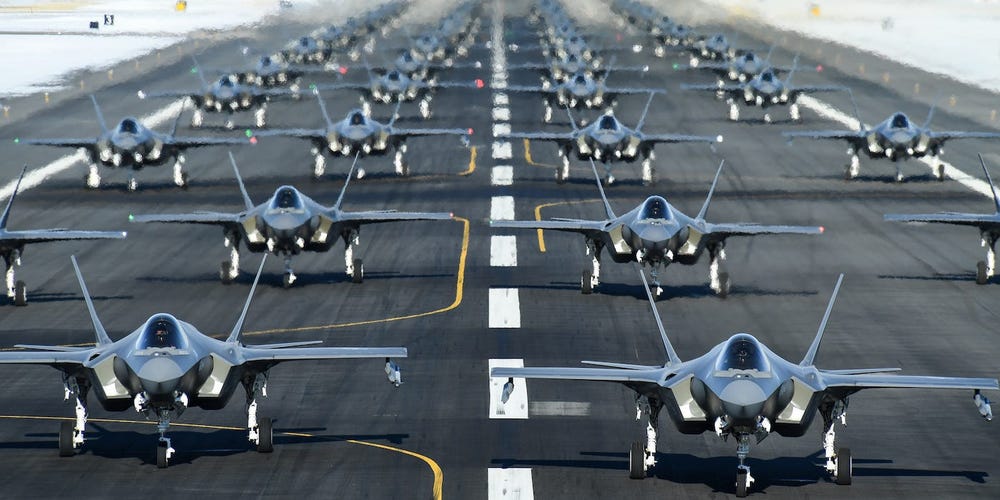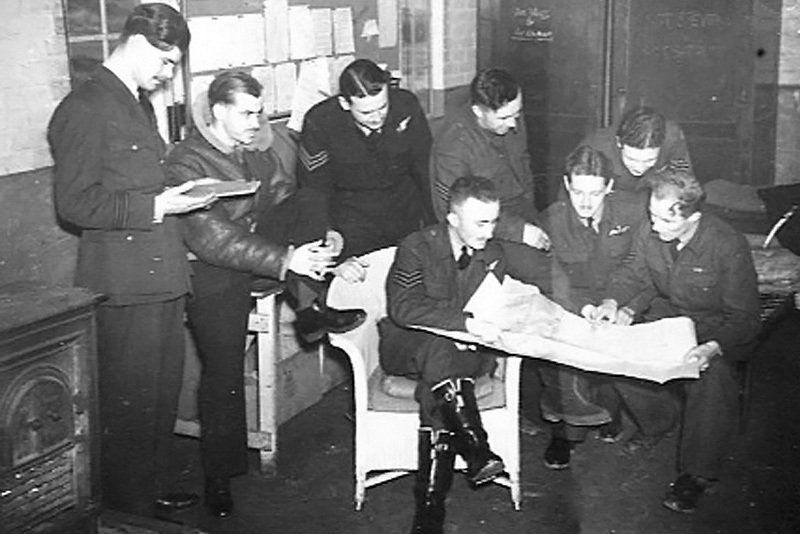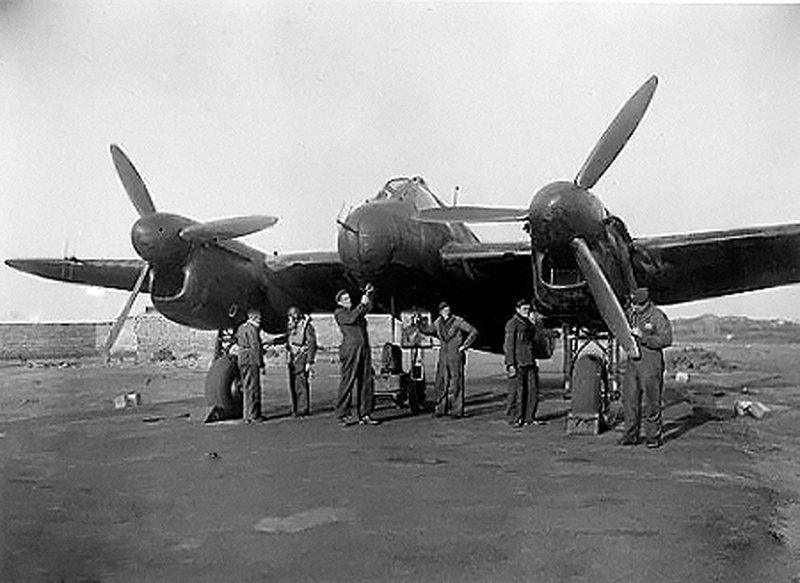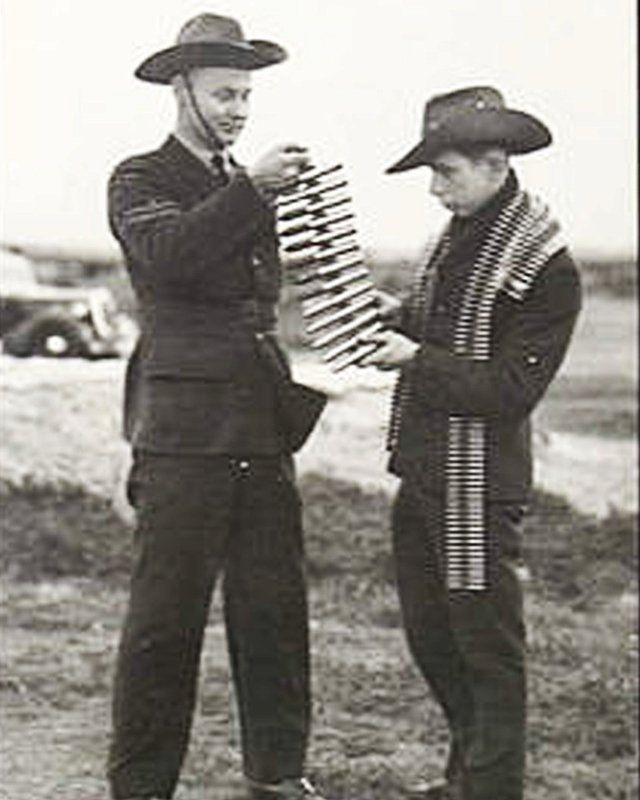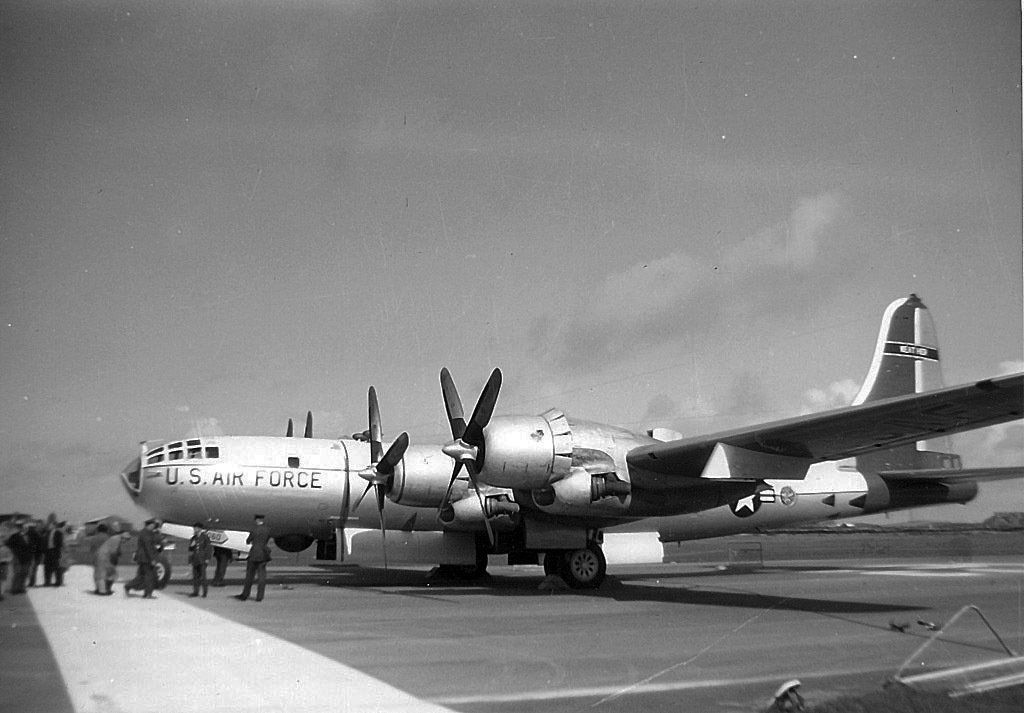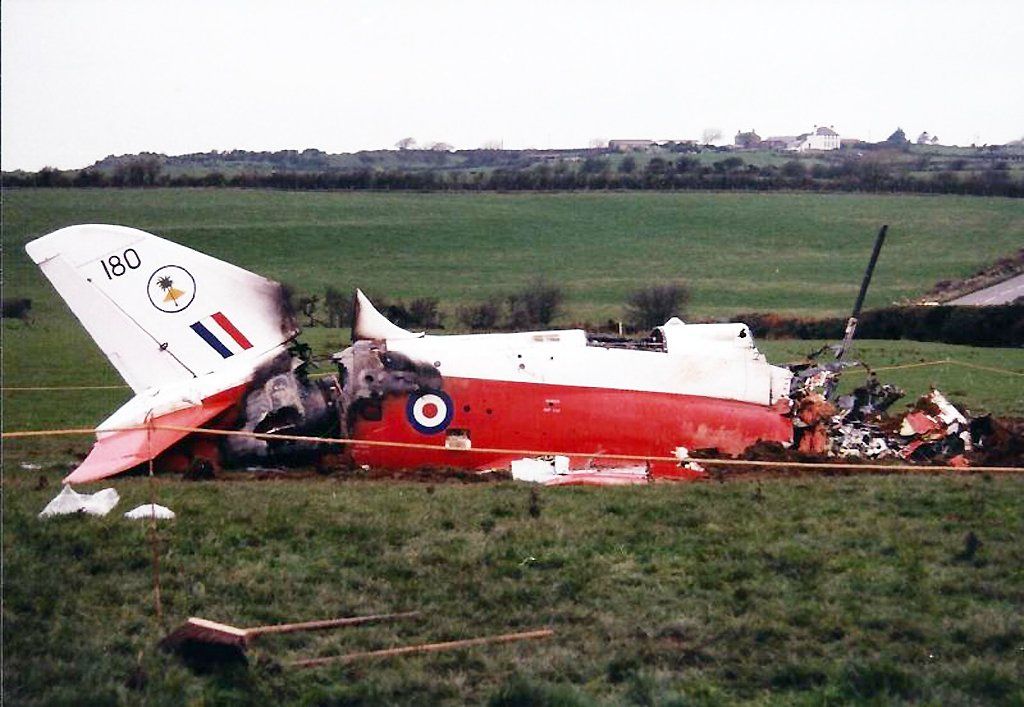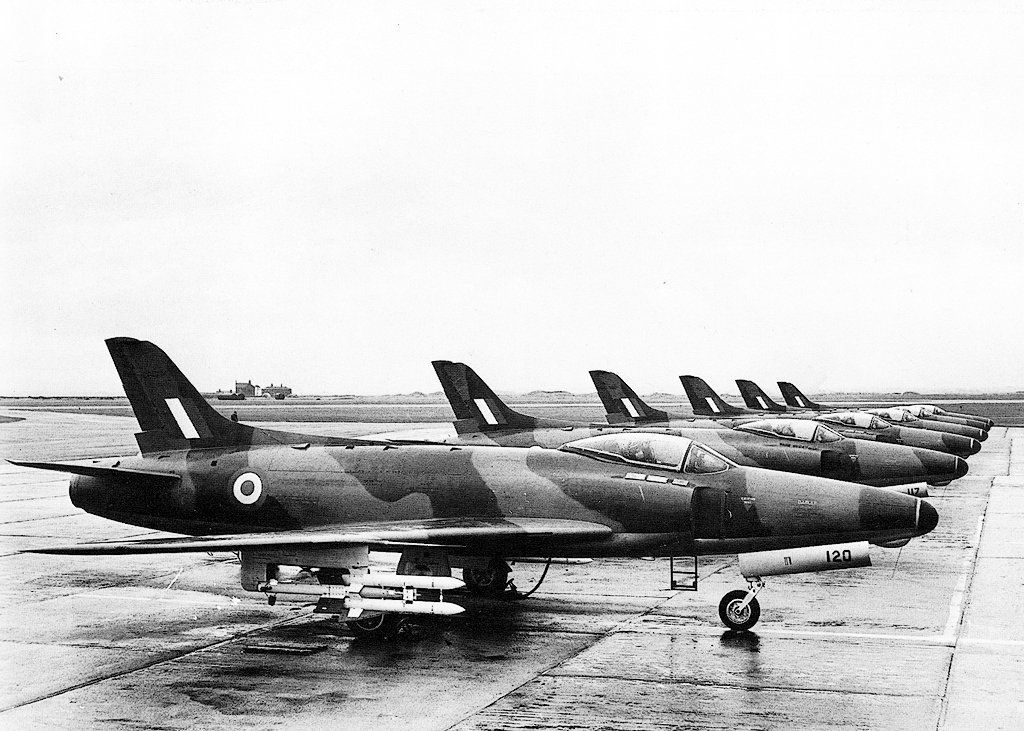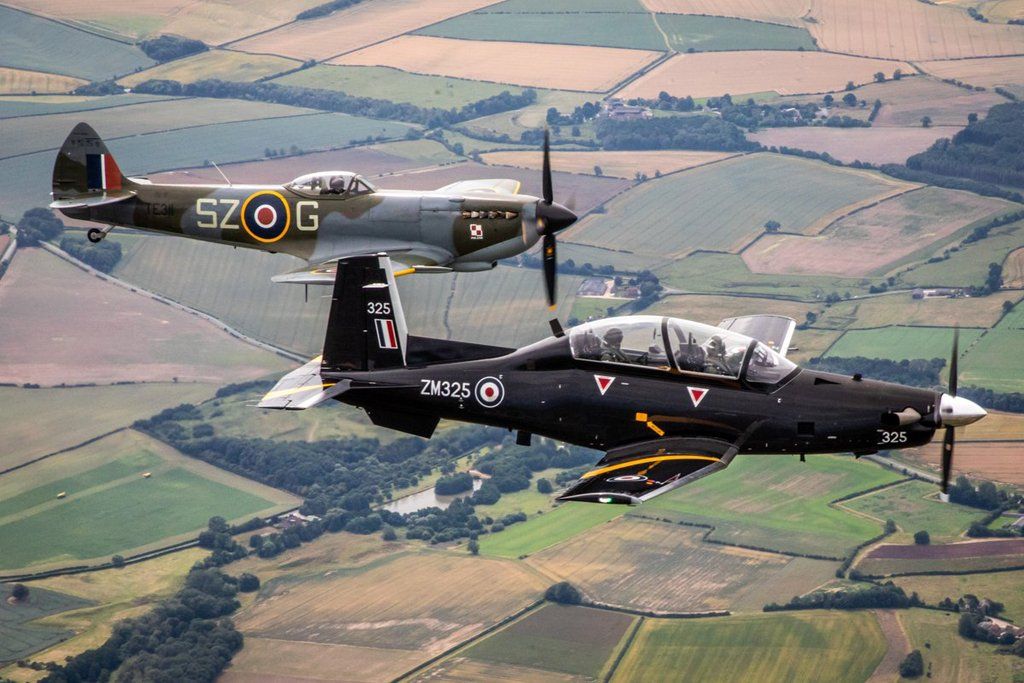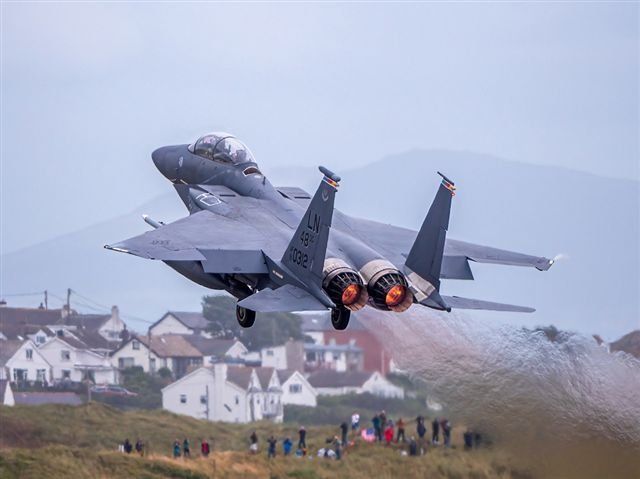THE AUSTRALIAN CONNECTION
THE AUSTRALIAN CONNECTION
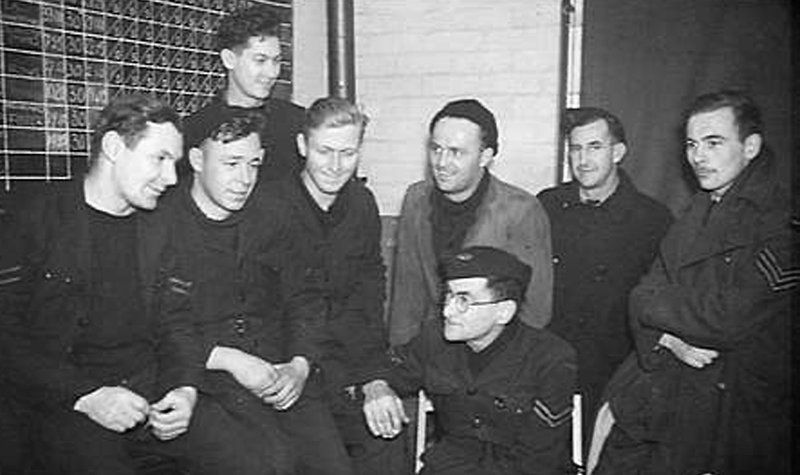
THE AUSTRALIAN CONNECTION
On 30 June 1941, No 456 (Australian) Squadron was formed at RAF Valley under command of Squadron Leader C.G.C. Olive, DFC. A highly qualified fighter ace, having shot down five enemy aircraft during the Battle of Britain when assigned to No 65 Squadron.
Equipped with Defiant Mk 1 night fighters, the fledgling unit, identity code SA, was to commence almost immediate with flying training sorties and initially staffed not only by Australians, but also British, Polish and Canadian personnel. The squadron was declared operational on 5 September, 1941 with code RX.
On 25 November 1941, the squadron was to complete its conversion to the Beaufighter Mk IIF and was to become operational on the type as the only Australian night fighter squadron in the RAF. These aircraft were fitted with Rolls Royce Merlin XX engines, as the standard Hercules engines were in short supply at the time. Armed with four 20 mm cannon in the former fuselage together with six 0.303 inch (7.7 mm machine guns in the wings, these models of the Beaufighter was faster at altitude, but required a longer take off run and were not to be very popular with its crew. With the A1 Mk IV radar installed, some delay was to occur as the tail gunners from the Defiants had to master the technique of using the intercept radar and the pilots had to deal with flying a twin engine fighter.
On 8 December, two raiders came into the sector. Sqdn Ldr Dottridge was given vectors for one, which he intercepted, but the German aircraft managed to dive from 13,000 feet down to 3,000 feet and managed to escape. The other was intercepted by Flying Officer Pargeter, who pursued the enemy as far as the Humber estuary, before losing it in cloud.
The squadron was to suffer continuing frustration as the crews failed to make any contact with the enemy, due to the continuing bad weather. On the day after, the disappointment was to increase, when enemy raiders attacked a convoy in the Irish Sea; having flown in low, thus avoiding the radars or visual detection. Despite desperate requests from the beleaguered convoy, with the cloud base below 200 feet and visibility less than a mile at RAF Valley, 456 was not able to get airborne.
The situation was not to improve into 1942. However, on 10 January 456 Squadron was to claim its first victory. The squadron commander, Squadron Leader J. Hamilton and Sgt Lowther were airborne on a daylight sortie in Beaufighter T 3022, having been briefed to escort a convoy. Whilst on patrol, a JU 88 was sighted shadowing the ships, using a fog bank as cover. The Australian immediately went on the attack and opened up with the cannon at 350 yards, before the German aircraft managed to slip into the fog bank. Having reported the encounter to RAF Valley, the crew were instructed to continue with their escort duties.
On 20 March 1942, Sgt Spring was to become a very lucky young Australian. While taking off on his third solo, the port wing of his Beaufighter was to strike the pole of a windsock. This resulted in the wing being torn off, with the fighter rolling over and over for 300 yards before bursting into flames, which in turn was to set off the ammunition. Surprisingly, Sgt Spring was to emerge out of the carnage: and although he had suffered some burns, they were not to be serious.
Unbeknown to the crew, the JU 88 D-1, 4V+FL of 3/KG 132 from Lannion had been severely damaged and was on fire. The pilot, Lt Wilhelm Wahler ditched the aircraft in Cardigan Bay. After some difficulty, the crew managed to get into their dinghy and it was not until 21 May that the crew were rescued by a passing merchant ship, by which time, two of the Germans were dead.
On 26 June, Pilot Officer Day and Sergeant Mitchell were scrambled on another daylight mission to intercept a JU 88, reported to be 30 miles off Bradsey Island. However, the German crew had already seen Beaufighter T 3014 and immediately opened fire; hitting the fighter in the port wing and engine. Pressing home a counter attack, the Aussies fired a 2 second burst followed by a 4 burst but no hits were observed by th crew. The port engine was then to come to a stop as the fuel line had been severed. With the Beaufighter becoming very difficult to control, the pilot decided to ditch after reporting to Valley of his intention.
A search and rescue mission was quickly mounted with 275 Squadron launching a Lysander and a amphibious Warlus. However, the first on the scene was to be RAF Valley’s Station Commander in a Spitfire, who was to co-ordinate the rescue. The Warlus alighted on the water to pick up the crew and they were returned to RAF Valley, suffering from exposure.
At about 01.00 hrs on the morning of 30 July, Wing Commander Wolfe and Pilot Officer Ashcroft were to chase a JU 88, which eventually managed to elude them. Soon after, the crew was vectored towards a HE 111, F8+LW of KG 40, which was severely damaged following two short bursts from 250 yards. Three of the German aircrew were rescued. The bomber was to eventually crash on the beach near Pwllheli, killing the other two. This was to be the last enemy aircraft to be destroyed in North Wales.
By November 1942, enemy activity had greatly declined, resulting in 456 Squadron patrolling further afield towards Milford Haven and on more than one occasion, even as far as the Scilly Isles.
Since the summer, the squadron had been equipped with the Hercules VI powered Beaufighter Mk VIFs, equipped with the improved AI Mk VIII radar and were painted in overall matt black, which surprisingly was found not to be very effective at night! As a result, the aircraft were painted in the standard day camouflage on the upper surfaces, whilst retaining the black under surfaces.
On 8 October 1942, the squadron’s Beaufighters were engaged on night exercises. At 23.00 hrs, Sergeant Scott reported that he was experiencing problems with his starboard engine. He then stated that he was preparing to return to RAF Valley and requested for the runway lights to be switched on.
Flying over Anglesey at 9,000 feet, he began descending through various cloud layers down to 2,000 feet. As he emerged from the bottom layer, he was to see the lights from a Q Site, which was a decoy in order to confuse the enemy, located about 8 miles south of RAF Valley. By then, the faulty engine had failed, so without first doing a circuit, the pilot decided to do a straight in approach. The Beaufighter was to strike a sand dune and both the pilot Sgt Scott and his observer Sgt Wood were killed in the ensuing crash.
In January 1943, the squadron commenced its conversion to the Mosquito NF Mk 11. These aircraft had an armament of four 20 mm cannon and four 0.303 inch (7.7 mm) machine guns and AI Mk IV radar. Although 456 Squadron was scrambled on many occasions to intercept German bombing raids, it was never to be successful in making contact. As the year progressed into February, no further hostiles were reported. By then, the unit had completed its transition to the Wooden Wonder.
On 30 February, following 21 months at RAF Valley, No 456 Squadron departed for RAF Middle Wallop and was replaced by No 406 (Canadian) Squadron.
KNOWN No 456 SQUADRON AIRCRAFT INCIDENTS AND LOSSES
21.7.41 Defiant Mk 1/T 3933 - Crashed near Llanerchymedd, Sgt Booker killed.
3.9.41 Defiant Mk 1/N 3458 - Landing accident.
6.9.41 Defiant Mk1/N 3479 - Overshot runway/Cat B.
17.9.41 Defiant Mk1/N 1690 - Ran off runway.
15.11.41 Beaufighter Mk IIF/T 3024 - Landing accident/Cat B.
18.11.41 Beaufighter Mk IIF/T 2334 - Cartwheeled on takeoff.
20.11.41 BeaufighterMk IIF/R 2372 - Landing accident.
5.1.42 Beaufighter Mk IIF/R 2474 - Crashed into sea off Rhosneigr. Flt Lt Parker and 2nd LT H.W.Frazier, U S Army Signal Corps killed.
5.1.42 Beaufighter Mk IIF/R 2476 - Crashed on approach.
28.1.42 Beaufighter Mk IIF/T 3047 - Landed short of runway.
31.1.42 Beaufighter Mk IIF/T 3028 - Wheels up landing.
16.2.42 Beaufughter Mk IIF/R 2341 - Tail wheel collapsed at RAF Speke, Liverpool.
25.4.42 Beaufighter Mk IIF /R 2341 - Prop hit ground after heavy landing.
14.3.42 Beaufighter Mk IIF/R 2381 - Ran off runway.
20.3.42 Beaufighter Mk IIF/ T 3012 - Hit windsock on takeoff and burst into flames.
3.5.42 Beaufighter Mk IIF/R 2381 - Swung off runway on takeoff. Second incident
26.6.42 Beaufighter Mk IIF/T 3014 - Shot down into Irish Sea by JU 88.
14.9.42 Beaufighter Mk VIF/V 8205 - Crash landed in field near Llangefni.
8.10.42 Beaufighter Mk VIF/X 8109 - Crashed near Newborough. Sgts Scott and Wood killed.
15.10.42 Beaufighter Mk VIF/8206 - Crashed short of runway.
1.11.42 Beaufighter Mk VIF/V 8444 - Crashed into sea. P.O. McGregor and Sgt McGormack killed.
10.11.42 Beaufighter Mk VIF/ X 8194 - Hit roof of house, near Cemaes Bay.
15.1.42 Mosquito NF Mk 11/DZ 658 - Crashed short of runway.
25.2.43 Beaufighter Mk VIF/X 8199 - Lost power, crashed 1500 feet, short of runway.
Photo 1 - Sqn Ldr Olive, DFC (3rd from the right) checks out documents.
Photo 2 - Defiant Mk 1.
Photo 3 - Sgt Hughes in front of his Defiant.
Photo 4 - 456 Sqn Beaufighter, Mk 11F
Photo 5 - W/Cdr Wolf and P.O. Ashcroft in front of the of their Beaufighter, following the successful destruction of a German He 111.
Photo 6 - P.O. Ashcroft checks out the remains of the He 111 at Pwllheli beach.
Photo 7 – Together with one of the captured German aircrew.
Photo 8 - Final checks before another sortie.
Photo 9 - 456 Sqn armourers.
Photo 10 - Squadron personnel.
Photo 11- 456 Sqn Mosquito NF 11.
Compiled with the grateful assistance of the Royal Australian Air Force Museum.
